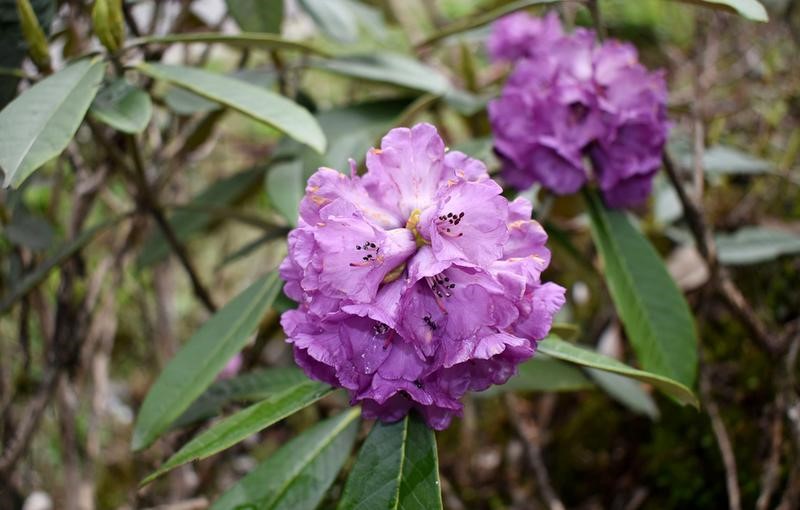Description

Copyright infringement not intended
Context: The Darjeeling and Sikkim Himalayas are home to more than one-third of all types of rhododendrons found in India, reveals the latest publication of the Botanical Survey of India (BSI).
Details:
Findings:
- The publication, titled Rhododendrons of Sikkim and Darjeeling Himalaya — An Illustrated Account, lists 45 taxa of rhododendrons (36 species, one subspecies, two variety and seven natural hybrids).
- There are 132 taxa (80 species, 25 subspecies and 27 varieties) of rhododendrons found in India.
- Of the 45 taxa recorded in the publication, 24 are found in the Darjeeling Himalayas and 44 in the Sikkim Himalayas.
- Darjeeling and Sikkim Himalayas comprise only 0.3% of India’s geographical area but the region is home to one-third (34%) of all rhododendron types. This highlights the ecological significance of the region as far as an indicator species like rhododendron is concerned.
.jpeg)
Threats:
- Of the 45 taxa documented by the BSI, five are facing a high threat due to anthropological pressures and climate change.
- Rhododendron edgeworthii, with white campanulate flowers, recorded a huge habitat decline in both Darjeeling and Sikkim.
- Rhododendron niveum, with big purple flowers, found in the Lachung area of north Sikkim is facing threats from rampant construction.
- Rhododendron baileyi, Rhododendron lindleyi and Rhododendron maddenii are also under threat.
About:
- Rhododendron, meaning rose tree in Greek, is considered an indicator species for climate change.
- The flowering season for rhododendrons starts in March and continues till May.
- However, recently, flowering was found to begin as early as in January for some species. This is an indication that those areas are getting warmer. The phenology of rhododendrons can be an important indicator of climate change.
- Rhododendrons have a prominent place in the country’s botanical history. They were first recorded by Captain Hardwick in Jammu and Kashmir in 1776 where he spotted Rhododendron arboreum.
- The genus Rhododendron (Ericaceae) is represented by about 80 species in India.
- It is distributed mainly in different regions and altitudes of Himalayas with a greater concentration in the eastern Himalayas.
- It is the largest genus of the family Ericaceae as well as among one of the largest flowering plant genera in Asia (Cullen and Chamberlain, 1978).
- The genus is mostly concentrated in the temperate regions of northern hemisphere especially in Sino-Himalayas (Eastern Himalayas and Western China).

BSI:
- Botanical Survey of India (BSI), the apex taxonomic research organization of the country which is under the Ministry of Environment, Forest & Climate Change, Government of India was established on 13th February 1890 under the direction of Sir George King.
- The organization’s mandate was to explore, collect, identify and document the rich plant resources of the erstwhile British India.
- During the colonial period, all the botanical research, collection and experimentation of Botanical Survey of India was concentrated in the Indian Botanical Garden erstwhile known as Royal Botanical Garden, Sibpur, Howrah.
- However, after Independence, Botanical Survey of India was reorganized in 1954, under the leadership of Dr. E.K. Janaki Ammal.
- Over the years, the mandate of the organization has been broaden to biosystematics research, floristic studies, documentation, databasing of National Botanical collection, digitization of herbarium specimens, development of molecular taxonomy laboratory, advisory services and capacity building training programmes etc.
- Presently, Botanical Survey of India is spread in 11 Regional Centers with 4 units at Head Quarter, Kolkata, viz. Industrial Section Indian Museum (ISIM), Acharya Jagdish Chandra Bose Indian Botanic Garden (AJCBIBG), Howrah - the oldest garden (founded in 1787), Central Botanical Laboratory (CBL) and Central National Herbarium (CNH) and Botanic Garden of Indian Republic, Noida (founded in 2002).
- The department has also developed a digital platform ‘Indian Plant Diversity Information System (IPDIS)’


https://epaper.thehindu.com/ccidist-ws/th/th_delhi/issues/25634/OPS/GEDAT59AI.1+G7MAT5TUQ.1.html












